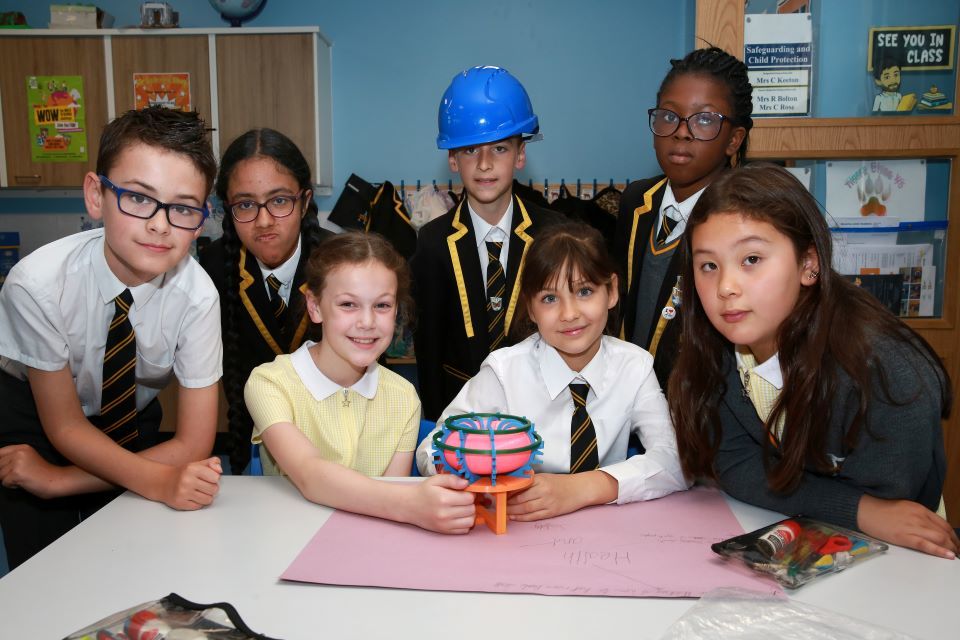
Future stars create fusion energy machine at school
Published By GOV.UK [English], Thu, Aug 4, 2022 3:18 AM
School children from Waverley Junior Academy, near Rotherham, have combined science with art to create a fusion energy machine of the future.
Year 5 students took part in two workshops to learn about fusion – based on the same processes that powers the sun and stars – which has great potential to become an environmentally responsible part of the world’s future energy supply.
Before taking to their pens and pencils to design a star-making machine, the students discovered what fusion is and let-off steam by running around to create energy of their own.
The fun and interactive sessions were delivered by a team from the UK Atomic Energy Authority (UKAEA) based at the neighbouring technology park in Catcliffe.
Jordan d‘Arras, graduate development engineer at UKAEA, said: “The children were really enthusiastic and asked so many good questions. They learned the importance of safe, low carbon energy in the fight against climate change and heard about the variety of career opportunities we have at UKAEA that will help make fusion happen. We hope to have inspired our engineers, scientists and communicators of the future!”
The students went head-to-head in a design competition and impressed the UKAEA team with their interpretation of what a future fusion energy machine could look like.
Waverley Junior Academy’s Year 5 teachers, Patrick Selkirk and Holly Peace, were very proud of the scientific knowledge and artistic talent of their classes.
Patrick said: “It was a great experience for the children to fully engage with. They had previously learnt all about renewable energy and the effects of non-renewable sources. The UKAEA workshop was enlightening and well-pitched to the children. The workshop began conversations that sparked debate about fusion energy.”
What is fusion energy?
Based on the same process that powers our sun and the stars, fusion has long been considered the ultimate energy source:
When a mix of two forms of hydrogen (deuterium and tritium) are heated to extreme temperatures (10 times hotter than the core of the sun) they fuse together to create helium and release vast amounts of energy in the form of heat.
This superheated material forms a plasma, the fourth state of matter found in lightning and neon signs. Plasma has incredibly complex, but fascinating, physics akin to weather systems, and predicting its behaviour is just as difficult.
There is more than one way of achieving fusion. At UKAEA, we hold this hot plasma using strong magnets in a doughnut-shaped machine called a tokamak.
The energy created from fusion can generate electricity similar to existing power stations.
For further information about UKAEA’s fusion technology facility in Rotherham, visit: ccfe.ukaea.uk
Press release distributed by Media Pigeon on behalf of GOV.UK, on Aug 4, 2022. For more information subscribe and follow